The 10 most-accessed articles in Green Chemistry for March 2013 were as follows:
Deconstruction of lignocellulosic biomass with ionic liquids
Agnieszka Brandt, John Gräsvik, Jason P. Hallett and Tom Welton
Green Chem., 2013, 15, 550-583
DOI: 10.1039/C2GC36364J, Critical Review
Gamma-valerolactone, a sustainable platform molecule derived from lignocellulosic biomass
David Martin Alonso, Stephanie G. Wettstein and James A. Dumesic
Green Chem., 2013, 15, 584-595
DOI: 10.1039/C3GC37065H, Critical Review
From themed collection Green Chemistry and the Environment
Catalytic applications of a versatile magnetically separable Fe–Mo (Nanocat-Fe–Mo) nanocatalyst
Manoj B. Gawande, Paula S. Branco, Isabel D. Nogueira, C. Amjad A. Ghumman, Nenad Bundaleski, Adérito Santos, Orlando M. N. D. Teodoro and Rafael Luque
Green Chem., 2013, 15, 682-689
DOI: 10.1039/C3GC36844K, Paper
Green chemistry and the ocean-based biorefinery
Francesca M. Kerton, Yi Liu, Khaled W. Omari and Kelly Hawboldt
Green Chem., 2013, 15, 860-871
DOI: 10.1039/C3GC36994C, Perspective
Chemodivergent, multicomponent domino reactions in aqueous media: L-proline-catalyzed assembly of densely functionalized 4H-pyrano[2,3-c]pyrazoles and bispyrazolyl propanoates from simple, acyclic starting materials
Pitchaimani Prasanna, Subbu Perumal and J. Carlos Menéndez
Green Chem., 2013, 15, 1292-1299
DOI: 10.1039/C3GC37128J, Paper
Aqueous oxidation of alcohols catalysed by recoverable iron oxide nanoparticles supported on aluminosilicates
Fatemeh Rajabi, Antonio Pineda, Sareh Naserian, Alina Mariana Balu, Rafael Luque and Antonio A. Romero
Green Chem., 2013, 15, 1232-1237
DOI: 10.1039/C3GC40110C, Paper
Reduction of aromatic and aliphatic nitro groups to anilines and amines with hypophosphites associated with Pd/C
Marc Baron, Estelle Métay, Marc Lemaire and Florence Popowycz
Green Chem., 2013, 15, 1006-1015
DOI: 10.1039/C3GC37024K, Paper
Reduction of sulfoxides and pyridine-N-oxides over iron powder with water as hydrogen source promoted by carbon dioxide
Ran Ma, An-Hua Liu, Cheng-Bin Huang, Xue-Dong Li and Liang-Nian He
Green Chem., 2013, 15, 1274-1279
DOI: 10.1039/C3GC40243F, Paper
Efficient three-component coupling catalysed by mesoporous copper–aluminum based nanocomposites
Jana Dulle, K. Thirunavukkarasu, Marjo C. Mittelmeijer-Hazeleger, Daria V. Andreeva, N. Raveendran Shiju and Gadi Rothenberg
Green Chem., 2013, 15, 1238-1243
DOI: 10.1039/C3GC36607C, Paper
Removal of transition metals from rare earths by solvent extraction with an undiluted phosphonium ionic liquid: separations relevant to rare-earth magnet recycling
Tom Vander Hoogerstraete, Sil Wellens, Katrien Verachtert and Koen Binnemans
Green Chem., 2013, 15, 919-927
DOI: 10.1039/C3GC40198G, Paper
Take a look at the articles, and then let us know your thoughts and comments below.
Fancy submitting your own work to Green Chemistry? You can submit online today, or email us with your ideas and suggestions.











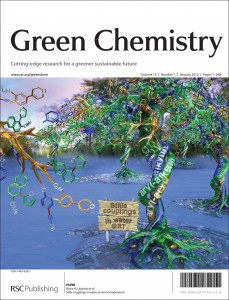
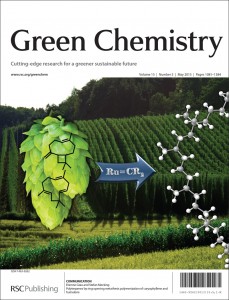
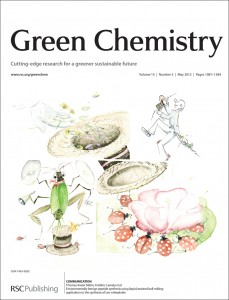
 Recycling old magnets, so that rare-earth metals can be re-used, could help to solve
Recycling old magnets, so that rare-earth metals can be re-used, could help to solve 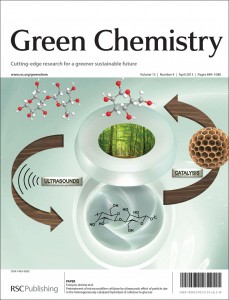
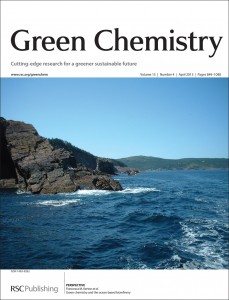
 Work by scientists from Queen’s University Belfast on
Work by scientists from Queen’s University Belfast on 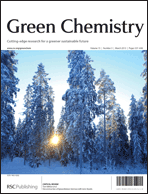 The front cover of this issue highlights a Critical Review by
The front cover of this issue highlights a Critical Review by 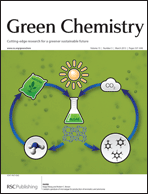 The inside front cover features work by
The inside front cover features work by 
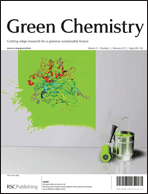 This issue features work by
This issue features work by 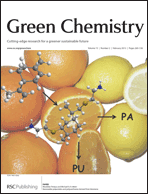 The inside front cover features work by
The inside front cover features work by